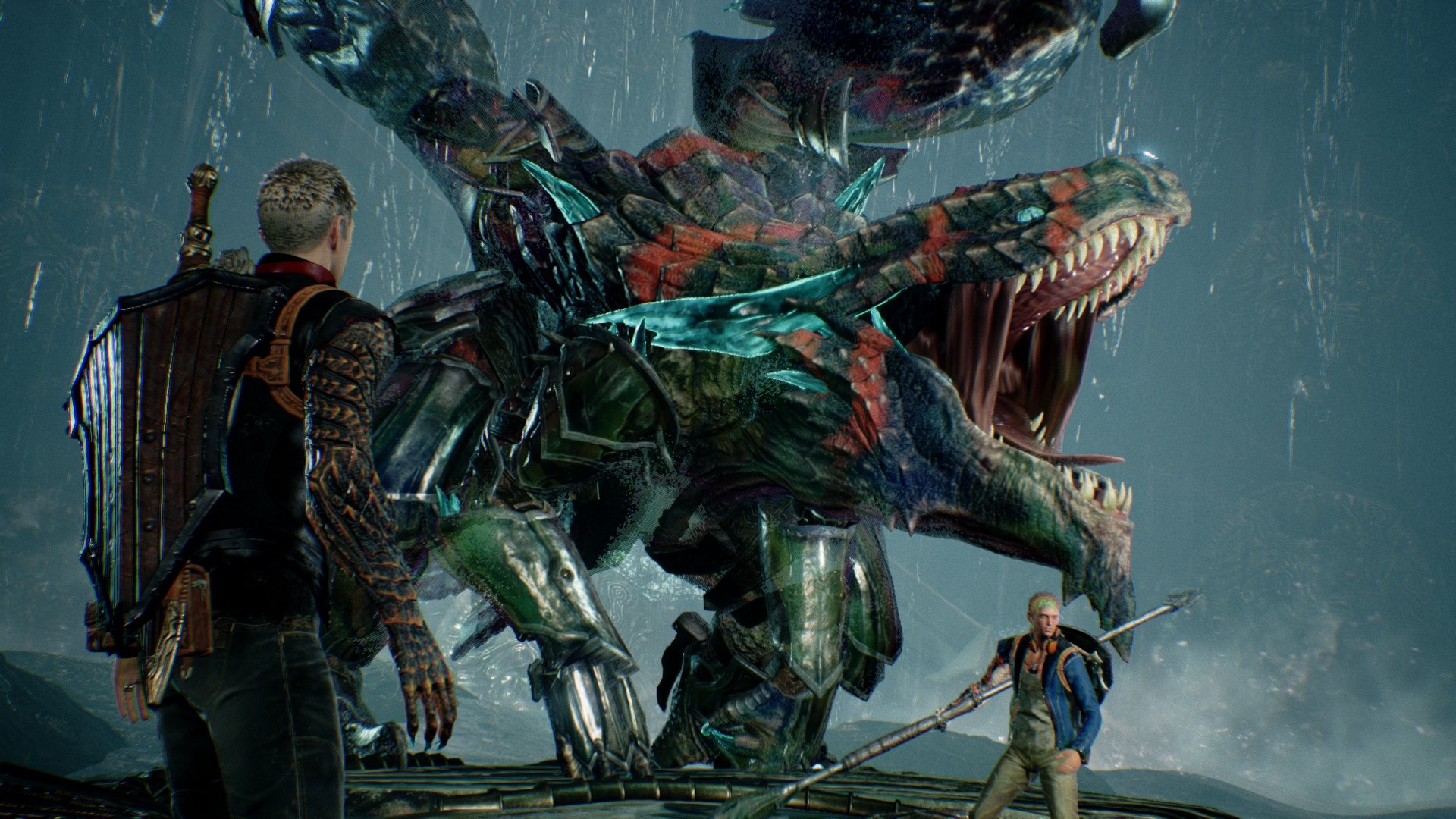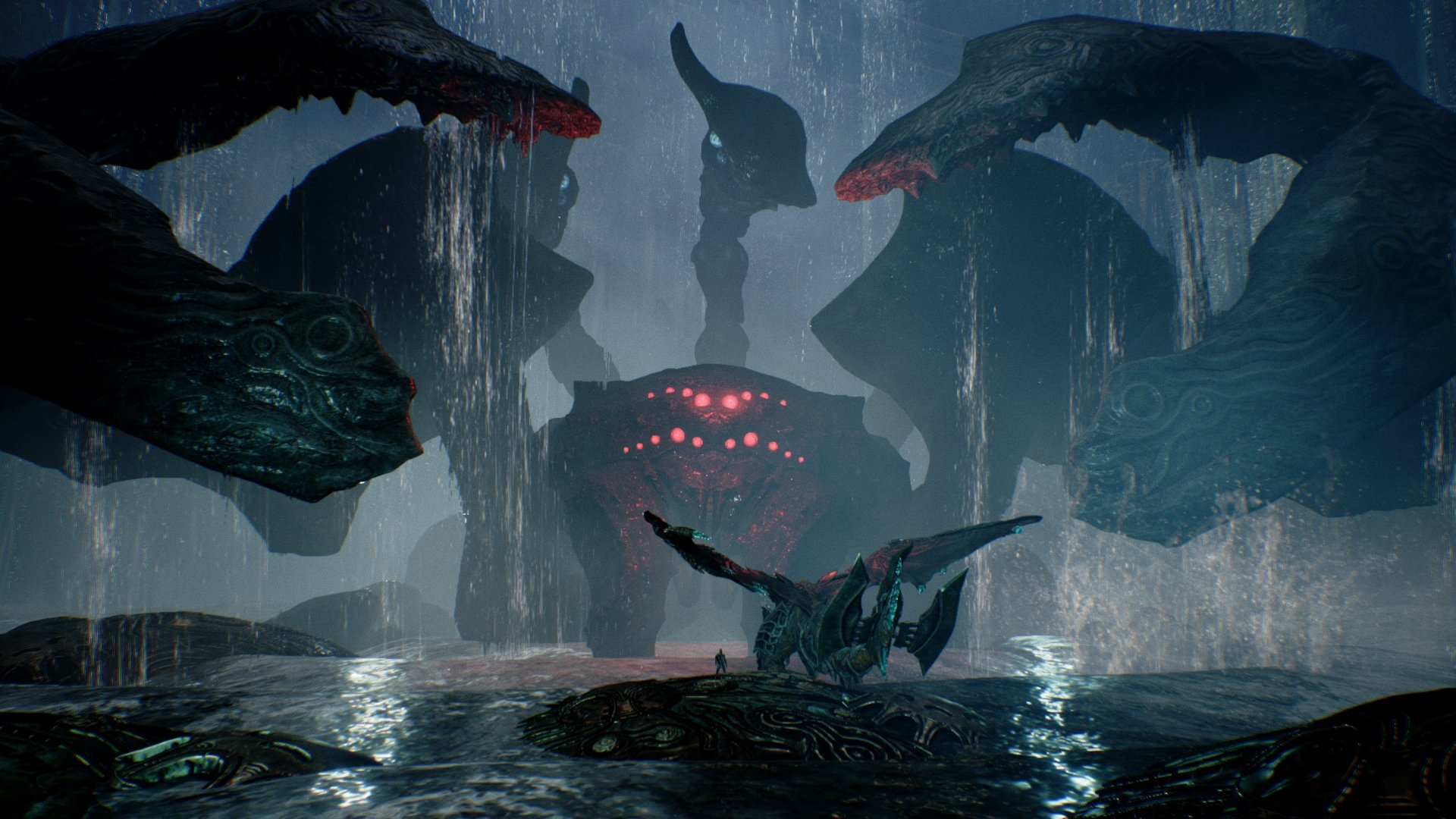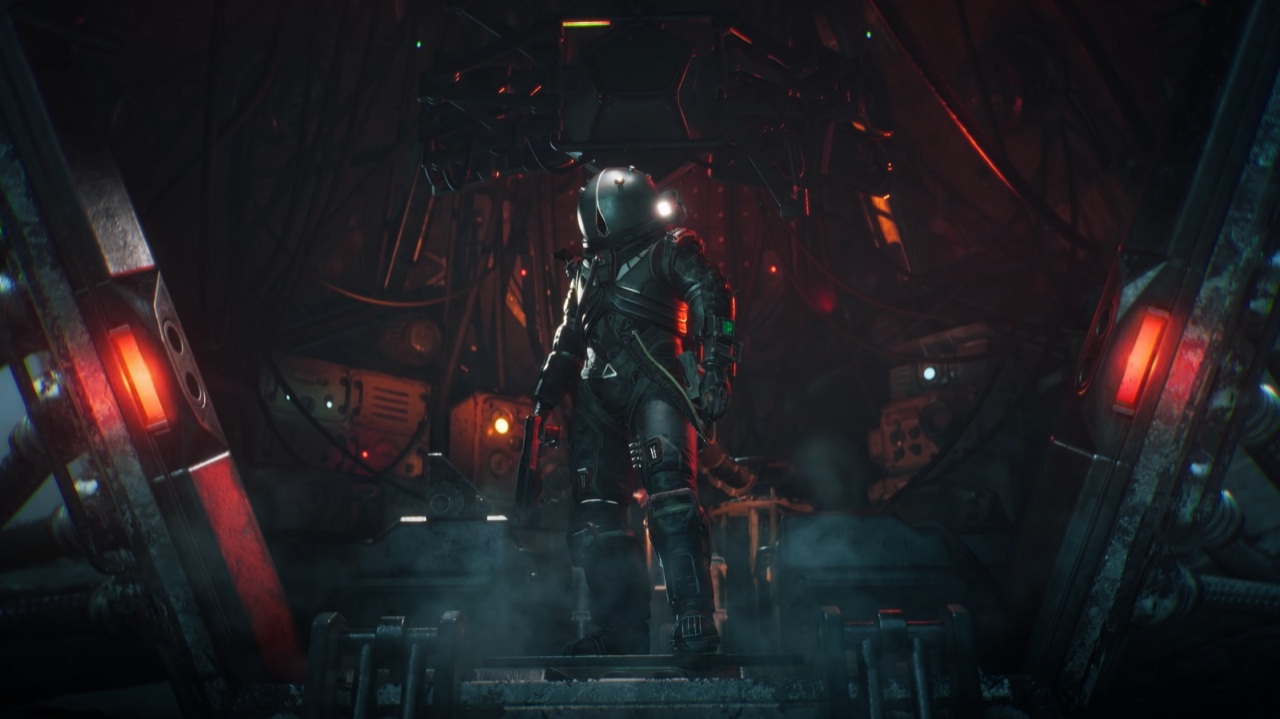Platinum Games tells us about Scalebound's huge world, gigantic monsters and story-driven co-op
Last week we caught up with Platinum Games, famed for games like Bayonetta, Metal Gear Rising and the upcoming Xbox Play Anywhere exclusive — Scalebound.

Scalebound is the tale of a bond between a young man and a dragon. For reasons unknown, Drew ends up in an alternative universe filled with gigantic, mythical creatures. While there, he forms an inseparable bond with Thuban, an enormous dragon of unimaginable power.
At E3 2016, Platinum Games gave us a taste of the sort of gameplay we can expect from its four-player co-op features. Not only will it allow up to four Drews, but also four Thubans, all on-screen to participate in gargantuan, large-scale combat, with RPG-like progression and exploration.
In a quick interview with Platinum Games' Hideki Kamiya and Jean Pierre Kellams, we discussed Scalebound's co-operative play, the true meaning of scale and more!
Jez Corden: So last year Platinum Games gave us a glimpse at Scalebound's campaign gameplay, battling massive creatures, utilizing your dragon's abilities and so on. This year, you've shown us a gigantic boss battle in a very co-op heavy trailer. First of all, I just wanted to ask whether or not co-op was a separate mode or part of the primary campaign?
"What we really want to build is a game where you can play it however you'd like to play it."
Platinum Games: So we're making a really big action RPG world. The campaign stuff that you said you saw? — Our overworld. You can play that in co-op as well. What we really want to build is a game where you can play it however you'd like to play it.
So if you want to play through all of that stuff – going through the field, defeating enemies, going into dungeons, you can totally do that by yourself. If you want to team up with your friends and do that exact same experience, going through the world, grind and get loot, going into dungeons, and play the kinda stuff that you saw in the video today? You can totally to do that as well.
Jez: When we saw four Drews playing together, it made me wonder how the co-operative elements work in relation to the story campaign. Do you join in and participate with a host player's story progression? Or is it more of a shared-world experience?
Get the Windows Central Newsletter
All the latest news, reviews, and guides for Windows and Xbox diehards.
PG: So we're not getting too deep into the details of the story. Yet. But we'll give you a little hint. The concept of Scalebound is this kid from our world – Drew – gets shoved into this fantasy world and bonded with a dragon – Thuban. And it's about their bond, and about that story of the two of them. And if you look closely into the video that we premiered today, at the very end? You saw those four Drews kind of collapse. If you go back and look at that? That's a hint to explain how we're handling some of that.

Jez: I'm glad to hear that, it can be immersion breaking in some co-op games, where suddenly you're playing co-operatively with multiple copies of your own character. It certainly sounds like you guys have added a story reason why there's four Drews on-screen at once?
PG: Alright, so we're not going to tell you too much because that would be going beyond a hint, haha. But, you know, we really wanted to make a co-op game. And we also wanted to make this game about Drew and Thuban and their bond and have that kind of story element be very strong and central to the experience. And you can totally go the easy way, right? And just say oh right, it's just a video game, four Drews, it's co-op, that's fine. We didn't want to take the easy way out on that. We wanted to find a better way around it.
We're not going to tell you today what that better way around it is, but we didn't just want to throw four Drews on the screen and be like "yeah it's just a video game, deal with it." That was not the goal. We wanted to do more.
"We didn't just want to throw four Drews on the screen and be like 'yeah it's just a video game, deal with it.' That was not the goal. We wanted to do more."
Jez: I remember last year I did see something about customization. A player had customized their dragon with lots of armor, and it was more like a defensive tanking dragon. It made me wonder if one player has a more defensive dragon they take the attention from enemies and 'tank' like in a typical MMO scenario perhaps? Can you comment on how the different types of dragons and character customizations affect synergy in multiplayer?
PG: So the dragons do have, I wouldn't necessarily call them class roles, but they do each have their own plusses and minuses that play into the grander scope of combat. So, you've seen the kind of, what we call the 'Rex' dragon, this kind of all-round dragon. He has a good mix of speed and combat abilities. The tank dragon that you described, he's much slower but has much more powerful attacks and much higher defensive abilities. In the video that you saw today, we actually premiered a brand new dragon. We premiered the Wyvern. The Wyvern is a much faster dragon, who can attack really quickly and do really powerful damage against creatures, but is much weaker.

Jez: When Scalebound was first announced, and we just had this pre-rendered cutscene, I feel like I remember that the word 'Scale' was teased as a clue to the game's breadth, as well as a reference to the dragon's scales. Just how big is the open world we're dealing with here? Could you compare it to a similar game?
"When it comes to 'scale', it means multiple things in the context of our title."
PG: So, when it comes to 'scale', it means multiple things in the context of our title. Scale as in dragon scale, being bonded with your dragon. It's also the scale of the world. Specifically, the scale of combat that combat takes place on. Seeing these enormous creatures fighting each other, being right in the middle of that.
The scale of the world isn't something that we – we didn't think "we want to be bigger than this game," that's not really how we approached it. Or "we want to have more story than this game", we want to stay true to these two pillars of 'scale', the epicness and the spectacle of the fights, and also the scale of the bond with the dragon.
To kinda speak a little bit to the scale of the world – you saw how big the boss that we showed today was, right? Maybe the best way to imagine it is this: imagine a world where that boss exists. Imagine a world where four Drews and dragons are getting into combat together. And seeing that kind of unfold in front of you. You have to have a very large world for that to just be possible. So, its scale, obviously, as you point out, has tons of meaning.
Jez: Finally, you showed us a huge new boss today, which, by the way, was a thing of beauty. Can you tell us about another boss maybe? Is there something even more crazy in size?
PG: Yeah so, obviously we don't want to give the crown jewels of Platinum fun, right? We got some ideas, and they are pretty rad.

Huge thanks to Hideki Kamiya and Jean Pierre Kellams of Platinum Games for speaking with us!
I'd argue that Scalebound is one of the more ambitious Xbox One exclusives on the horizon. The huge battles, potentially massive maps, and intriguing premise make the game all the more enticing. Platinum Games are known for pushing the boundaries of the genres they tackle, and Scalebound looks to be no different.
Scalebound is heading to Xbox One and Windows 10 as a buy once, play anywhere title scheduled for 2017.

Jez Corden is the Executive Editor at Windows Central, focusing primarily on all things Xbox and gaming. Jez is known for breaking exclusive news and analysis as relates to the Microsoft ecosystem while being powered by tea. Follow on Twitter (X) and Threads, and listen to his XB2 Podcast, all about, you guessed it, Xbox!
